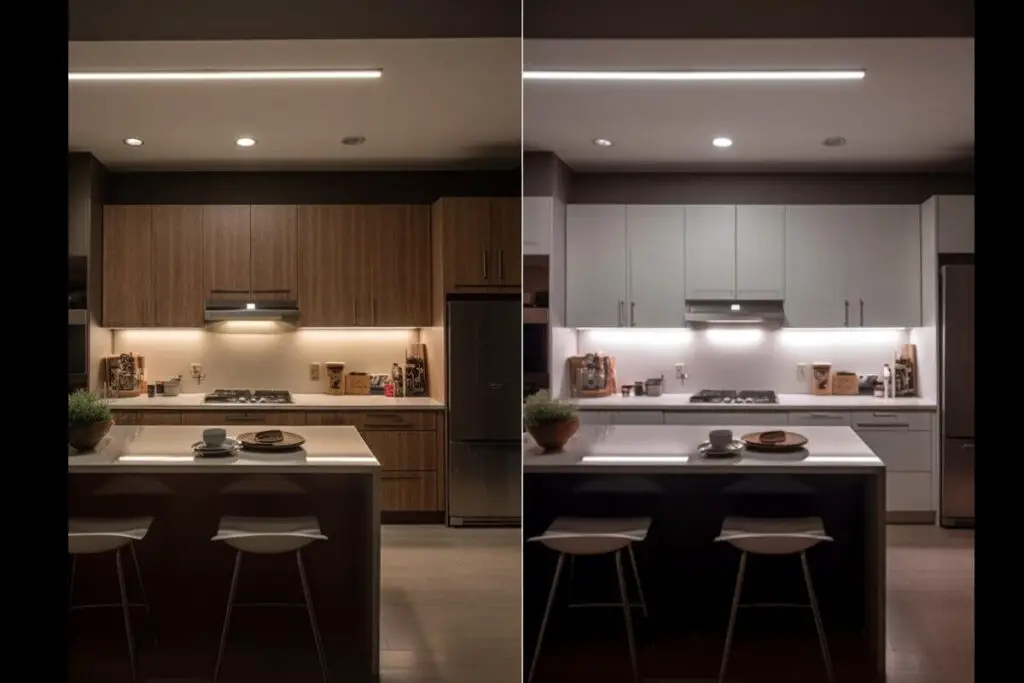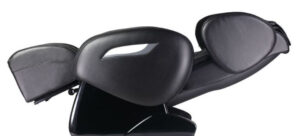Introduction
When it comes to lighting your kitchen, the choice of color temperature can significantly impact not only the aesthetics but also the functionality of the space. In this article, we will explore the differences between two popular options: 4000K and 5000K lighting. By the end, you’ll have a better understanding of which color temperature suits your kitchen needs best.
Understanding Color Temperature
Before diving into the comparison, let’s briefly explain what color temperature means in lighting. Color temperature is measured in Kelvin (K) and indicates the warmth or coolness of light. Lower Kelvin values, such as 2700K, emit warm, yellowish light akin to incandescent bulbs. Higher Kelvin values, such as 5000K, produce cooler, bluish light similar to daylight.
The Case for 4000K Lighting
1. Warm and Cozy Ambiance
If you prefer a warm and inviting atmosphere in your kitchen, 4000K lighting is an excellent choice. It creates a comfortable environment that is perfect for family gatherings and relaxed cooking sessions.
2. Complements Earthy Tones
4000K lighting works well with earthy and traditional kitchen designs. It enhances the warmth of wooden cabinets and rustic decor, making your kitchen feel more welcoming.
3. Reduced Glare
This color temperature minimizes glare on reflective surfaces like countertops and stainless steel appliances. It ensures that your kitchen remains a comfortable and functional space, even under bright lighting conditions.
The Benefits of 5000K Lighting
1. Bright and Energetic
5000K lighting provides a bright and energetic ambiance, perfect for busy kitchens where precision matters. It replicates natural daylight, ensuring you can see every detail while cooking or working.
2. Ideal for Modern Designs
For modern kitchens with sleek, minimalist designs, 5000K lighting is an ideal choice. It complements contemporary aesthetics and enhances the overall look of the space.
3. Enhanced Productivity
If your kitchen doubles as a workspace or you often find yourself meal prepping, 5000K lighting can boost productivity. It reduces eye strain and increases alertness, making tasks easier to complete.
Which One to Choose?

The decision between 4000K and 5000K lighting ultimately depends on your kitchen’s purpose and your personal preferences. Here are some key factors to consider:
1. Kitchen Style
- Traditional Kitchen: Opt for 4000K for a warm and cozy atmosphere.
- Modern Kitchen: Choose 5000K for a sleek and energetic look.
2. Tasks and Activities
- Casual Cooking: 4000K provides a comfortable environment.
- Precision Tasks: 5000K ensures better visibility.
3. Personal Preference
Consider what type of lighting makes you feel most comfortable and productive in your kitchen. Experimenting with both color temperatures can help you make an informed decision.
Conclusion
In the debate of 4000K vs. 5000K for your kitchen, there’s no one-size-fits-all answer. Your choice should align with your kitchen’s style, purpose, and your personal comfort. Whether you lean towards the warmth of 4000K or the brightness of 5000K, the right lighting can transform your kitchen into a space you’ll love.
FAQs
Can I use a combination of both 4000K and 5000K lighting in my kitchen?
Yes, combining these color temperatures strategically can create a balanced and versatile lighting scheme.
Are LED bulbs available in both 4000K and 5000K options?
Yes, LED bulbs are available in various color temperatures, including 4000K and 5000K.
Will 5000K lighting make my kitchen look too clinical?
It depends on your kitchen’s design. With the right decor and color scheme, 5000K lighting can enhance modern aesthetics without feeling clinical.
Is one color temperature more energy-efficient than the other?
Generally, both 4000K and 5000K LED bulbs are energy-efficient, but individual bulb specifications may vary.
Can I install dimmer switches with both 4000K and 5000K lighting?
Yes, dimmer switches can be used with both color temperatures to adjust the lighting intensity according to your needs.



